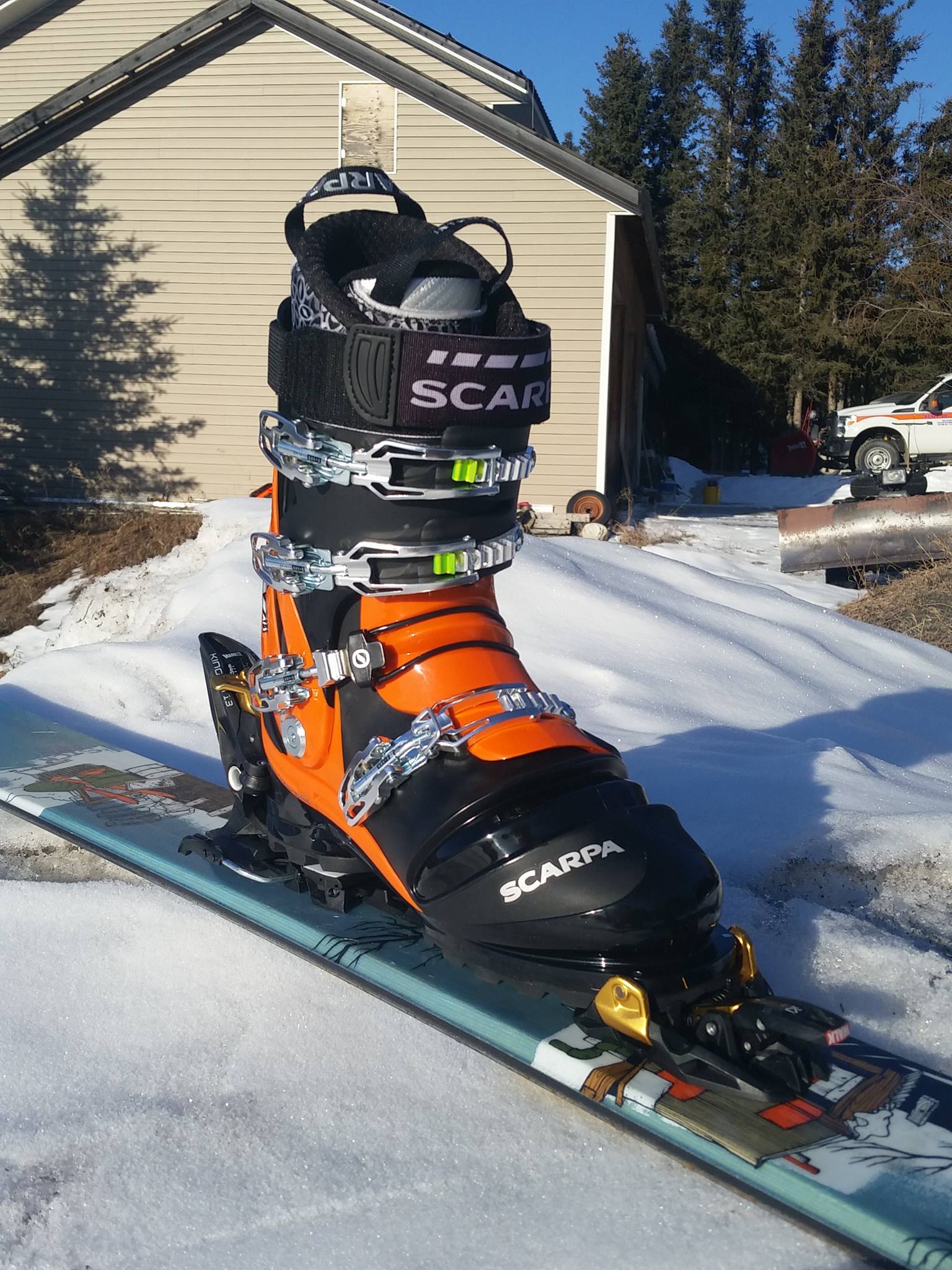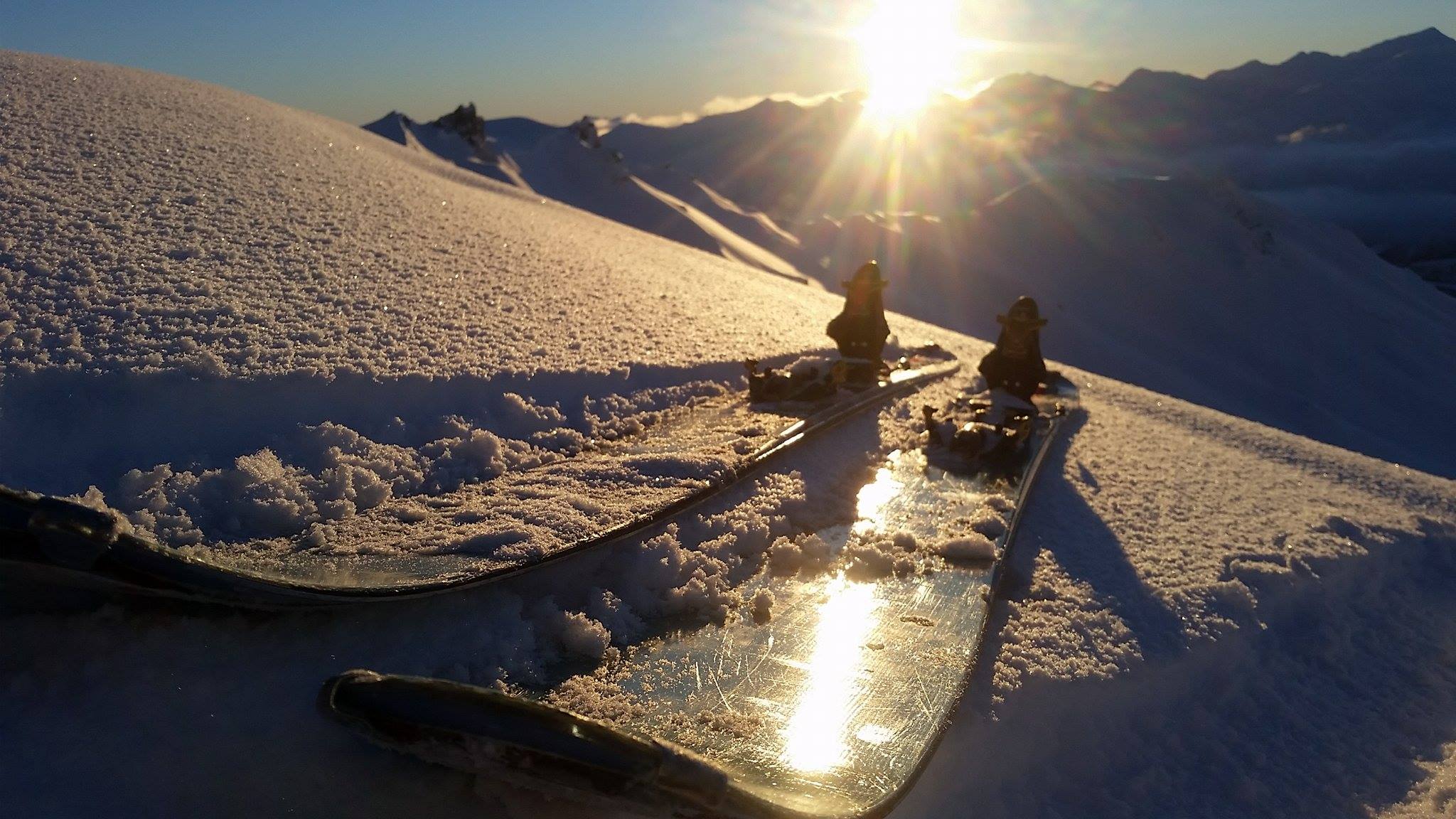 The key aspect
of touring that makes it possible is the gear. Since there
are no gondolas or ski lifts in the backcountry, touring
gear must be lightweight and versatile. Whether boot-packing
with your skis on your back, or touring with them on your
feet, the heavier they are the faster you get worn out.
The key aspect
of touring that makes it possible is the gear. Since there
are no gondolas or ski lifts in the backcountry, touring
gear must be lightweight and versatile. Whether boot-packing
with your skis on your back, or touring with them on your
feet, the heavier they are the faster you get worn out. The biggest difference between alpine gear and alpine touring gear is the boots and bindings. Touring bindings always have a walk and a ski mode. In walk mode, the heel of the boot is free and the toe is connected by pins so that it can rotate, allowing the setup to function more like a cross-country ski or snowshoe. To achieve this, the boot is constructed with a hole drilled into both sides of the toe piece. The toe piece of the binding is constructed with pinned arms that clamp down into the holes of the boot and are locked in place by springs and levers such that it can still release when enough pressure is applied. This system is standard on nearly every touring binding on the market, but the heel piece often differs depending in the manufacturer.
The most common design for the heel piece is another pinned system. When in ski mode, the pins slide up and lock into slots on the heel of the boot. To switch to walk mode, the binding is simply rotated such that the pines stick out to the side instead of towards the boot. A separate design, like the one pictured to the left, functions identically to a regular alpine heel piece. The only difference is that it is mounted to a slider, and can be slid back for walk mode.
Entirely different from the bindings referred to above are the frame-style bindings. These bindings are essentially regular alpine bindings, but the entire system, heel and toe piece, is mounted to a hinged rod or platform. This allows the entire system, boot, binding and all, to pivot when in walk mode, rather than just the boot. These bindings are less commonly used due to their increased weight, but the benefit is that any regular alpine ski boot can be used with them.
The last vital component of touring skiing is the climbing skins. Skins attach to the bottom of the ski and enable you to tour up hills and across terrain where normally you wouldn't be able to go. Skins, as well as the physics behind them, will be discussed later on.
